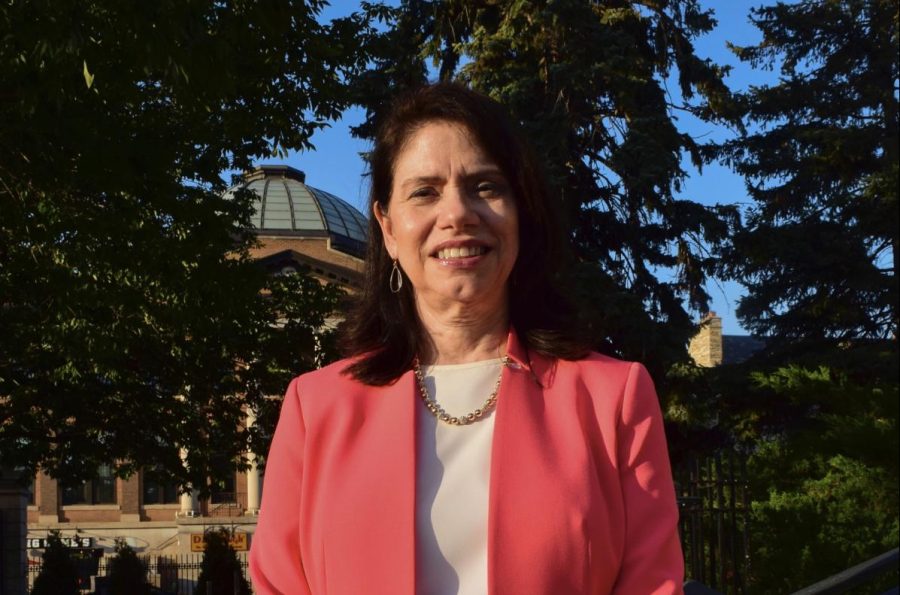Tucked away near the Mississippi River over by Sanford Hall lies the University of Minnesota’s Main Energy Plant, which is responsible for supplying energy to the Minneapolis campus.
The plant uses a unique combined heat and power system that is helping reduce the University’s greenhouse gas emissions. Since it began operating in 2017, the plant has helped reduce around one-tenth of the University’s carbon emissions, said Shane Stennes, the University’s director of sustainability. This is a significant step in helping the University reach its goal of being carbon neutral by 2050.
A more efficient plant
About 65 percent of the University’s emissions come from heat and electricity, Stennes said.
While it is common for universities to produce their own energy, the University of Minnesota is unique because it is pioneering initiatives that help reduce its carbon footprint.
The plant produces heat and electricity using the same fuel source. District Plant Manager Josh Svejcar describes this as a two-for-one deal, which is more energy-efficient.To produce energy, a giant turbine in the plant spins a generator that makes electricity and uses excess heat to transform water into steam. The plant produces about 90,000 pounds of steam an hour. The steam is sent out to heat campus through tunnel systems 90 feet underground.
Underneath the East and West Bank campuses are around nine miles of tunnels and piping, a hidden system that supplies heat to University buildings. Some tunnels were built in the 1910s, with 5-foot thick walls to keep groundwater out. About 90 percent of the steam sent out to campus gets condensed down and returns to the plant as water through the pipe system using gravity. It is then reused in the process. This greatly reduces how much water the University uses and energy needed and saves millions of gallons of water that otherwise would come from the city’s water supply.
“You get more bang for your buck,” Svejcar said.
A growing campus
The University built the plant because it realized the other plant on the East Bank campus would not be able to continue reliably supporting campus as it continues to expand.
The campus has grown around 3 million square feet over the past decade, with a majority of those acres located on East Bank, according to Stennes. Even as campus continues to grow, initiatives such as using more efficient lighting systems have kept the University from greatly increasing its energy use and carbon footprint.
While efforts to reduce the University’s energy use have helped, the plant was built with extra space to expand if demand does increase.
Cost efficient, reliable and sustainable
Construction of the Main Energy Plant was a key component of the University’s 2011 Climate Action Plan, which guided the University and its emission reduction goals through 2020.
The University is now undergoing efforts to create a long-term energy master plan for campus. Administrators are looking for ways to continue pushing the University toward its long-term goal of offsetting 100 percent of emissions by 2050.
“The energy system has a huge impact on the University’s emissions,” Stennes said.
As these efforts are underway, Stennes said the team is balancing cost effectiveness, reliability and sustainability.
While other universities are also making similar efforts, Stennes said the University has been able to make more progress with reducing emissions in a cost-effective way that continues to be reliable.










